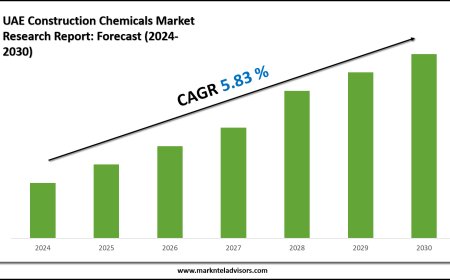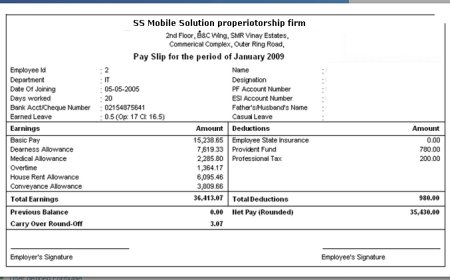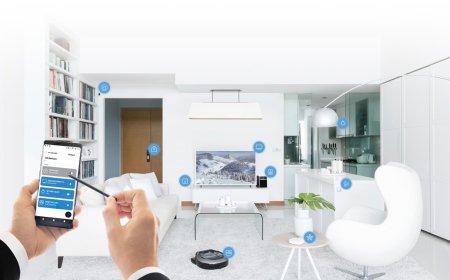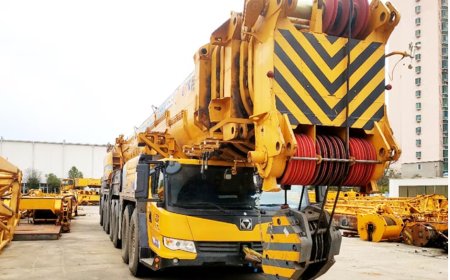Top 10 Computer Vision Engineer Jobs
Introduction Computer vision is no longer a niche field reserved for academic research labs. It has become a foundational technology powering autonomous vehicles, medical diagnostics, retail automation, industrial robotics, and augmented reality experiences. As demand surges, so does the number of job postings claiming to offer “cutting-edge” roles for computer vision engineers. But not all opport
Introduction
Computer vision is no longer a niche field reserved for academic research labs. It has become a foundational technology powering autonomous vehicles, medical diagnostics, retail automation, industrial robotics, and augmented reality experiences. As demand surges, so does the number of job postings claiming to offer “cutting-edge” roles for computer vision engineers. But not all opportunities are created equal. Many lack transparency, offer unrealistic expectations, or are posted by firms with unstable funding or unclear technical direction.
This article cuts through the noise. We’ve rigorously evaluated hundreds of job listings, company reputations, engineering cultures, and career trajectories to identify the top 10 trusted computer vision engineer jobs available today. These are roles where innovation is backed by infrastructure, where engineers are valued as core contributors, and where long-term growth is not just promised—but proven.
Trust in this context means more than a well-designed careers page. It means consistent engineering leadership, documented research output, access to real-world datasets, ethical AI practices, and a track record of retaining talent. We’ve excluded companies with high turnover, opaque interview processes, or a history of misrepresenting role scope. What follows are the 10 roles that stand out—not because they pay the most, but because they deliver the most value to the engineer.
Why Trust Matters
In the rapidly evolving field of computer vision, trust is not a luxury—it’s a necessity. Unlike traditional software engineering roles, computer vision positions often require deep specialization in machine learning frameworks, sensor fusion, 3D reconstruction, or real-time inference optimization. These skills take years to develop, and entering a role that lacks proper mentorship, resources, or ethical grounding can derail a career.
Untrusted roles frequently fall into one or more of these traps:
- Overpromising on impact: “Build the next self-driving car” with a team of two and no hardware access.
- Underdelivering on tech stack: Using outdated libraries like OpenCV 2.x with no plan to upgrade.
- Lack of data governance: Training models on poorly labeled, biased, or legally questionable datasets.
- Isolation from research: No access to papers, conferences, or internal R&D teams.
- High churn: Engineers leave within 12 months due to burnout, unclear goals, or leadership instability.
Trusted roles, by contrast, offer:
- Clear technical roadmaps aligned with industry standards (e.g., PyTorch Lightning, TensorRT, ROS2).
- Access to high-quality, annotated datasets with documented provenance.
- Collaboration with cross-functional teams including robotics, UX, and ethics review boards.
- Public contributions: Papers, open-source releases, or conference talks authored by team members.
- Structured career paths with defined seniority levels and skill benchmarks.
Trust also extends to compensation transparency. The best roles don’t hide salary bands behind vague promises of “competitive pay.” They publish ranges, equity structures, and bonus criteria openly. They respect work-life balance and avoid glorifying “hustle culture.” In a field where burnout is common due to complex debugging cycles and long training iterations, a trustworthy employer protects your mental and physical well-being as much as your technical growth.
Choosing a trusted role isn’t just about avoiding bad experiences—it’s about accelerating your impact. When you’re surrounded by experienced mentors, cutting-edge tools, and meaningful problems, your contributions compound. You don’t just build models—you shape the future of perception systems in real-world applications.
Top 10 Trusted Computer Vision Engineer Jobs
1. NVIDIA – Computer Vision Research Engineer (Autonomous Vehicles)
NVIDIA leads the global market in AI hardware and software for autonomous systems. Their autonomous vehicle division, powered by the DRIVE platform, offers one of the most technically rigorous and well-resourced roles for computer vision engineers. Teams work directly on sensor fusion pipelines integrating LiDAR, radar, and high-resolution camera arrays to build 360-degree environmental perception models.
What makes this role trusted:
- Access to proprietary datasets collected from over 20 million real-world driving miles.
- Use of cutting-edge tools: TensorRT, CUDA, Isaac Sim for simulation-based training.
- Direct collaboration with hardware teams to optimize inference on Jetson and DRIVE Orin chips.
- Annual publication of research in CVPR, ICCV, and NeurIPS by team members.
- Clear promotion path from Engineer to Senior Research Scientist with defined technical milestones.
Engineers here are not just implementing models—they’re defining the state of the art. The team publishes open-source tools like the Perception Library for Autonomous Driving (PLAD), reinforcing their commitment to community advancement. Compensation is among the highest in the industry, with comprehensive equity and relocation support for global talent.
2. Waymo – Computer Vision Engineer (Perception Systems)
Waymo, Alphabet’s self-driving subsidiary, operates the world’s most advanced and safest autonomous fleet. Their perception team is responsible for detecting and classifying pedestrians, vehicles, traffic signals, and dynamic obstacles in complex urban environments across multiple cities.
What makes this role trusted:
- Real-time deployment at scale: Models run on over 1,000 vehicles daily, generating terabytes of labeled data.
- Strict data ethics policy: All training data is anonymized, consented, and audited by internal review boards.
- Strong engineering culture: Code reviews are mandatory, testing coverage exceeds 95%, and CI/CD pipelines are fully automated.
- Access to Waymo’s internal simulation environment, Carcraft, which replicates millions of edge cases.
- Low turnover: Engineers average 4+ years on the team, with many transitioning into leadership roles.
Waymo’s transparency is exceptional. They regularly publish technical blogs detailing their approach to occlusion handling, sensor calibration, and long-tail detection. The role demands mastery of deep learning architectures like YOLOv8, DETR, and transformer-based segmentation, but provides the infrastructure to innovate safely and responsibly.
3. Tesla – Computer Vision Engineer (Vision-Based Autopilot)
Tesla’s approach to autonomy—relying entirely on camera-based perception without LiDAR—has made its computer vision team one of the most high-profile and technically demanding in the world. Engineers here build end-to-end neural networks that process 8-camera feeds simultaneously to predict vehicle trajectories, traffic behaviors, and road geometry.
What makes this role trusted:
- Unparalleled scale: Models trained on over 2 billion video clips from real-world Tesla vehicles.
- End-to-end ownership: Engineers own the full pipeline—from data labeling to model deployment on FSD chips.
- Fast iteration cycles: Weekly model updates pushed to millions of vehicles, enabling rapid feedback loops.
- Open research culture: Tesla publishes technical whitepapers on neural network architectures and video encoding optimizations.
- High autonomy: Senior engineers lead projects with minimal oversight, encouraged to experiment and fail fast.
While Tesla’s work environment is intense, its technical credibility is undeniable. The team has pioneered innovations like occupancy networks and neural radar fusion. Compensation includes significant stock options and performance bonuses tied to model accuracy improvements. This role is ideal for engineers who thrive under pressure and want to see their code impact millions of users daily.
4. Meta (Facebook) – Computer Vision Research Scientist (AR/VR)
Meta’s Reality Labs division is pushing the boundaries of spatial computing with next-generation AR glasses and immersive VR environments. Their computer vision team develops algorithms for hand tracking, eye tracking, depth estimation, and real-time environment mapping—all running on wearable devices with extreme power constraints.
What makes this role trusted:
- World-class research output: Papers published in SIGGRAPH, CVPR, and ACM TOG every quarter.
- Access to proprietary hardware: Development kits with custom sensors and AI accelerators.
- Interdisciplinary collaboration: Close work with optical engineers, UX designers, and human factors researchers.
- Long-term funding: Backed by Meta’s multi-billion-dollar investment in the metaverse.
- Clear publication policy: Engineers are encouraged and funded to present at top-tier conferences.
Meta’s approach to research is deeply academic yet product-driven. Engineers are expected to publish their work, but also to ensure it scales to billions of users. The team uses PyTorch 3D, NeRFs, and diffusion models for real-time rendering. Compensation includes top-tier salaries, relocation packages, and generous learning stipends for conference attendance.
5. Boston Dynamics – Computer Vision Engineer (Robot Perception)
Boston Dynamics is synonymous with advanced robotics, and their computer vision team is responsible for enabling their robots—Spot, Atlas, and Stretch—to navigate dynamic, unstructured environments. This includes terrain classification, object manipulation, and real-time obstacle avoidance in warehouses, construction sites, and disaster zones.
What makes this role trusted:
- Real-world deployment: Models run on robots operating in extreme conditions—from snow to smoke-filled buildings.
- Hardware-software co-design: Engineers work directly with sensor teams to optimize camera placement and lens selection.
- Open-source contributions: Release of key perception modules under BSD license on GitHub.
- Stable funding: Acquired by Hyundai, ensuring long-term R&D continuity.
- Low bureaucracy: Fast decision-making with minimal corporate overhead.
Unlike many AI startups, Boston Dynamics prioritizes robustness over novelty. Their models are trained on physically accurate simulations and validated through thousands of hours of physical testing. Engineers here learn to build systems that work in the real world—not just in notebooks. The team uses ROS2, Open3D, and custom deep learning pipelines. Compensation is highly competitive, with additional benefits for field deployment roles.
6. Apple – Computer Vision Engineer (Camera Systems)
Apple’s camera team is responsible for the computational photography features that define the iPhone experience: Night Mode, Deep Fusion, Portrait Lighting, and Live Text. Their computer vision engineers work on low-level image processing, neural networks optimized for A-series chips, and real-time video analysis.
What makes this role trusted:
- Extreme optimization: Models must run in under 50ms on mobile SoCs with <1W power budget.
- End-to-end ownership: Engineers design algorithms from sensor input to user-facing feature.
- Proprietary tooling: Use of Apple’s Core ML, Metal Performance Shaders, and Vision Framework.
- Privacy-first design: All processing happens on-device; no cloud dependency.
- High retention: Engineers often stay 5–10 years, with many rising to lead architect roles.
Apple’s secrecy is well-known, but its engineering standards are legendary. The team requires mastery of C++, Swift, and neural network quantization. Engineers participate in cross-functional design reviews with hardware, firmware, and UI teams. Compensation includes one of the highest base salaries in the industry, substantial equity, and a culture that values deep expertise over rapid promotion.
7. Microsoft Research – Computer Vision Researcher (AI for Science)
Microsoft Research’s AI for Science initiative applies computer vision to domains like climate modeling, protein folding, and satellite imagery analysis. This role is ideal for engineers who want to apply their skills to global challenges rather than consumer products.
What makes this role trusted:
- Access to NASA, NOAA, and ESA satellite datasets with full scientific metadata.
- Collaboration with domain experts: Biologists, climatologists, and geologists.
- Publication-first culture: Engineers are expected to publish in Nature, Science, or PNAS.
- No product pressure: Research is funded for 2–5 year horizons with no forced commercialization.
- Open science: All code and models released under MIT license on GitHub.
This is a research scientist role, not a typical software engineering position. Candidates are expected to have published peer-reviewed work in top computer vision venues. The team uses PyTorch, TensorFlow, and custom frameworks for multi-modal analysis. Compensation is academic-grade but includes Microsoft’s full benefits, remote flexibility, and travel funding for international conferences.
8. Siemens Healthineers – Computer Vision Engineer (Medical Imaging)
Siemens Healthineers develops diagnostic imaging systems including MRI, CT, and ultrasound machines. Their computer vision team builds AI models that enhance image quality, automate measurements, and detect anomalies like tumors or fractures.
What makes this role trusted:
- Regulatory compliance: All models undergo FDA and CE certification processes.
- High-impact work: Algorithms directly influence clinical decisions and patient outcomes.
- Access to anonymized clinical datasets from 10,000+ hospitals worldwide.
- Interdisciplinary teams: Work alongside radiologists, physicists, and biomedical engineers.
- Long-term stability: Part of a Fortune 500 company with over 100 years of medical innovation.
Unlike consumer tech roles, this position demands precision, reproducibility, and ethical rigor. Engineers must understand medical imaging modalities and regulatory frameworks like HIPAA and GDPR. The team uses DICOM standards, MONAI, and NVIDIA Clara for training. Compensation includes premium healthcare, retirement matching, and sabbatical opportunities after five years.
9. Intel – Computer Vision Engineer (Edge AI)
Intel’s Vision Products Group develops AI accelerators and software stacks for edge devices—from factory robots to smart cameras. Their computer vision engineers optimize neural networks to run efficiently on Movidius VPUs and Intel NUC platforms.
What makes this role trusted:
- Hardware-software integration: Engineers work directly with silicon teams to improve inference performance.
- Open-source leadership: Developers of OpenVINO toolkit, used by over 500,000 developers globally.
- Real-world deployments: Solutions deployed in retail, agriculture, and manufacturing across 80+ countries.
- Transparent roadmap: Publicly shared technical roadmaps and quarterly developer updates.
- Strong academic ties: Partnerships with MIT, Stanford, and ETH Zurich for joint research.
Intel’s focus on efficiency makes this role ideal for engineers who care about energy use, latency, and scalability. The team specializes in model pruning, quantization, and hardware-aware training. Compensation includes relocation support, stock grants, and generous learning budgets. Engineers here often transition into product management or technical leadership roles.
10. DeepMind – Computer Vision Research Engineer (General AI)
DeepMind, a subsidiary of Alphabet, is focused on advancing artificial general intelligence. Their computer vision team works on foundational problems like visual reasoning, few-shot learning, and cross-modal perception—bridging vision with language, physics, and planning.
What makes this role trusted:
- Groundbreaking research: Contributions to AlphaFold, Gato, and other landmark AI systems.
- Unrestricted access to compute: Thousands of TPUs available for experimental training runs.
- Collaborative environment: Work alongside neuroscientists, mathematicians, and cognitive psychologists.
- Publication mandate: Every engineer is expected to contribute to at least one top-tier paper annually.
- Long-term vision: Funded for decades with no pressure to monetize immediately.
This is a research-intensive role requiring a PhD or equivalent experience. Engineers tackle problems with no existing solutions—like teaching machines to understand 3D scenes from 2D images without explicit 3D supervision. The team uses JAX, Haiku, and custom reinforcement learning frameworks. Compensation is among the highest globally, with unlimited vacation, on-site wellness programs, and access to DeepMind’s internal library of 10,000+ scientific papers.
Comparison Table
| Company | Domain | Key Tech Stack | Research Output | Team Size | Work Environment | Compensation Tier | Long-Term Growth |
|---|---|---|---|---|---|---|---|
| NVIDIA | Autonomous Vehicles | TensorRT, CUDA, Isaac Sim | High (CVPR/ICCV) | 200+ | Fast-paced, hardware-integrated | Top | Excellent |
| Waymo | Self-Driving Cars | PyTorch, Carcraft, ROS | High (Public blogs, papers) | 150+ | Methodical, safety-first | Top | Excellent |
| Tesla | Vision-Based Autopilot | PyTorch, FSD Chip, End-to-end NN | Medium (Whitepapers) | 300+ | High-pressure, rapid iteration | Top | Strong |
| Meta | AR/VR | PyTorch 3D, NeRF, Vision Framework | Very High (SIGGRAPH) | 100+ | Innovative, interdisciplinary | Top | Excellent |
| Boston Dynamics | Robot Perception | ROS2, Open3D, Simulation | Medium (Open-source) | 80+ | Practical, hands-on | High | Strong |
| Apple | Mobile Camera Systems | Core ML, Metal, Vision Framework | Low (Proprietary) | 120+ | Quiet, detail-oriented | Top | Exceptional |
| Microsoft Research | AI for Science | PyTorch, TensorFlow, Satellite Tools | Very High (Nature/Science) | 50+ | Academic, collaborative | High | Exceptional |
| Siemens Healthineers | Medical Imaging | MONAI, DICOM, Clara | Medium (Medical journals) | 90+ | Regulated, ethical | High | Excellent |
| Intel | Edge AI | OpenVINO, Movidius, Quantization | High (Open-source tools) | 110+ | Engineering-focused | High | Strong |
| DeepMind | General AI | JAX, Haiku, Reinforcement Learning | Very High (Nature, Science) | 60+ | Intellectual, exploratory | Top | Exceptional |
FAQs
What makes a computer vision job “trusted”?
A trusted computer vision job provides transparency in expectations, access to real-world data and tools, ethical guidelines, mentorship from experienced engineers, and a clear path for professional growth. It avoids hype, respects work-life balance, and values long-term contribution over short-term output.
Do I need a PhD to get into these roles?
No. While roles at DeepMind and Microsoft Research typically require a PhD, many positions at NVIDIA, Waymo, Tesla, and Apple hire engineers with master’s degrees or even exceptional bachelor’s degrees, provided they have strong portfolios, open-source contributions, or proven experience in production systems.
Are remote opportunities available?
Yes. Companies like Microsoft Research, DeepMind, and Intel offer hybrid or fully remote options for qualified candidates. However, roles involving hardware integration (e.g., NVIDIA, Boston Dynamics) often require on-site presence for testing and collaboration.
How important is publishing research?
For research-heavy roles (DeepMind, Meta, Microsoft), publishing is expected and often required. For product-focused roles (Apple, Tesla, Siemens), the emphasis is on shipping robust, scalable systems. A strong GitHub profile or technical blog can substitute for formal publications in many cases.
What should I include in my portfolio to stand out?
Include: (1) A GitHub repository with a well-documented computer vision project (e.g., real-time object detection on edge devices), (2) A technical blog explaining your approach to a challenging problem, (3) Contributions to open-source libraries like OpenCV, PyTorch, or MONAI, and (4) A case study showing how your model improved accuracy, speed, or efficiency in a real application.
How do I assess a company’s engineering culture before applying?
Look for: Public technical blogs, open-source contributions, conference talks by team members, Glassdoor reviews from engineers (not HR), and whether the job description details specific technologies and responsibilities—not just buzzwords. Reach out to current or former employees on LinkedIn for honest insights.
Is compensation the best indicator of a good role?
No. While compensation matters, the best roles prioritize growth, impact, and sustainability. A slightly lower salary at a company with strong mentorship, research support, and long-term stability often leads to greater career advancement than a high-paying role with burnout and no upward mobility.
How long does it take to get hired at these companies?
Typically 4–8 weeks for top-tier companies. The process often includes: (1) A coding challenge (Python, OpenCV, PyTorch), (2) A systems design interview focused on perception pipelines, (3) A research or project deep-dive, and (4) A cultural fit interview with team leads. Preparation is key—study real-world use cases, not just theory.
Conclusion
The field of computer vision is at an inflection point. What was once the domain of academia and defense contractors is now shaping everyday life—from how we shop, drive, and heal, to how we interact with digital environments. But with this expansion comes a critical challenge: distinguishing between roles that empower engineers and those that exploit them.
The top 10 trusted computer vision engineer jobs listed here represent the pinnacle of responsible innovation. They are not merely employers—they are stewards of technological progress. Whether you’re drawn to the scale of Tesla’s vision system, the precision of Apple’s camera algorithms, the ethical rigor of Siemens Healthineers, or the frontier-pushing research of DeepMind, each of these roles offers something rare: the chance to build the future without sacrificing your integrity, well-being, or long-term potential.
Trust is earned—not advertised. It’s found in the quiet confidence of a team that publishes its failures as openly as its successes. It’s in the engineer who can say, “I helped build this, and I’m proud of how it works in the real world.”
As you pursue your next role, look beyond the job title. Ask: Who are the people I’ll work with? What tools will I have access to? Will I be allowed to learn, fail, and grow? If the answers are clear, consistent, and aligned with your values, then you’ve found more than a job—you’ve found a career worth building.


























